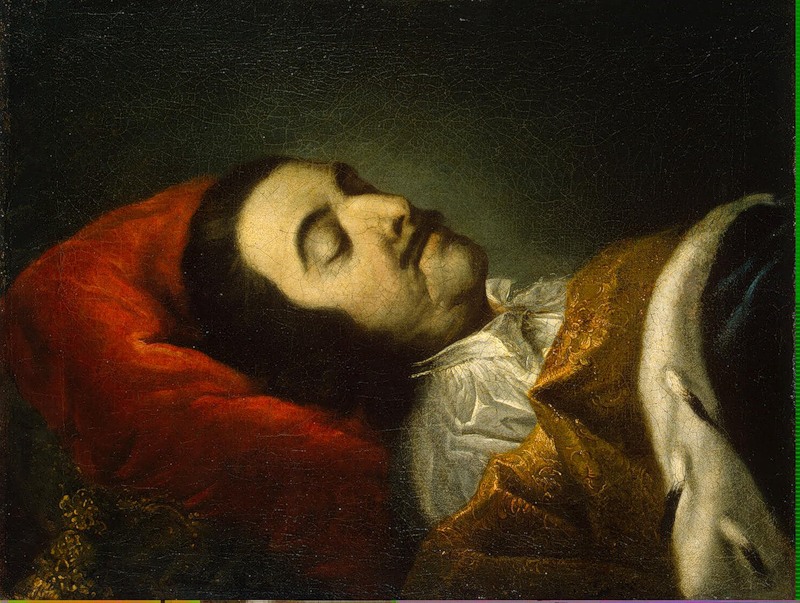Johann Gottfried Tannauer on:
[Wikipedia]
[Google]
[Amazon]
 Johann Gottfried Tannauer, or Dannhauer (1680,
Johann Gottfried Tannauer, or Dannhauer (1680,
by Y. Pelevin @ ArtClassics. While working in Karlsbad, he was recommended to TsarBrief biography
@ RusArtNet.

 Johann Gottfried Tannauer, or Dannhauer (1680,
Johann Gottfried Tannauer, or Dannhauer (1680, Saxony
Saxony (german: Sachsen ; Upper Saxon: ''Saggsn''; hsb, Sakska), officially the Free State of Saxony (german: Freistaat Sachsen, links=no ; Upper Saxon: ''Freischdaad Saggsn''; hsb, Swobodny stat Sakska, links=no), is a landlocked state of ...
-1733/37, Saint Petersburg
Saint Petersburg ( rus, links=no, Санкт-Петербург, a=Ru-Sankt Peterburg Leningrad Petrograd Piter.ogg, r=Sankt-Peterburg, p=ˈsankt pʲɪtʲɪrˈburk), formerly known as Petrograd (1914–1924) and later Leningrad (1924–1991), i ...
) was a German painter, portraitist and miniaturist
A portrait miniature is a miniature portrait painting, usually executed in gouache, watercolor, or enamel. Portrait miniatures developed out of the techniques of the miniatures in illuminated manuscripts, and were popular among 16th-century eli ...
who worked in Russia after 1711.
Biography
He began as a watchmaker inSwabia
Swabia ; german: Schwaben , colloquially ''Schwabenland'' or ''Ländle''; archaic English also Suabia or Svebia is a cultural, historic and linguistic region in southwestern Germany.
The name is ultimately derived from the medieval Duchy of ...
, then studied music, but finally turned to painting and worked with Sebastiano Bombelli
Sebastiano Bombelli (October 1635; 4 May 1719) was an Italian painter, mainly active in Venice, during the Baroque period.
Biography
He was born in Udine on 14 or 15 October 1635 (baptized on the 15th), educated and trained under the guidance ...
in Venice. After that, he visited Holland, where he copied the works of Rubens and decided to specialize in portraits.Brief biography and appreciationby Y. Pelevin @ ArtClassics. While working in Karlsbad, he was recommended to Tsar
Peter I Peter I may refer to:
Religious hierarchs
* Saint Peter (c. 1 AD – c. 64–88 AD), a.k.a. Simon Peter, Simeon, or Simon, apostle of Jesus
* Pope Peter I of Alexandria (died 311), revered as a saint
* Peter I of Armenia (died 1058), Catholico ...
by the Czech painter, Jan Kupecký
Ján Kupecký or Jan Kupecký (in German: Johann Kupetzky, in Hungarian: Kupecky János, or Kupeczky János, 1667 – July 16, 1740) was a Czech portrait painter during the baroque. He was active in Hungary, Vienna and Nürnberg. Bernhard Vogel ...
. In 1710, he won an appointment as court painter
A court painter was an artist who painted for the members of a royal or princely family, sometimes on a fixed salary and on an exclusive basis where the artist was not supposed to undertake other work. Painters were the most common, but the cour ...
and, after arriving in Smolensk
Smolensk ( rus, Смоленск, p=smɐˈlʲensk, a=smolensk_ru.ogg) is a city and the administrative center of Smolensk Oblast, Russia, located on the Dnieper River, west-southwest of Moscow. First mentioned in 863, it is one of the oldest c ...
, accompanied the Tsar on his travels during the Pruth River Campaign
The Russo-Ottoman War of 1710—1711, also known as the Pruth River Campaign, was a brief military conflict between the Tsardom of Russia and the Ottoman Empire. The main battle took place during 18-22 July 1711 in the basin of the Pruth riv ...
. This turned out badly for the Tsar and Tannauer, who lost all of his painting equipment.
Upon settling in Saint Petersburg, he painted portraits of most of the members of the Royal Court, including Alexei Petrovich, Tsarevich of Russia
Grand Duke Alexei Petrovich of Russia (28 February 1690 – 26 June 1718) was a Russian Tsarevich. He was born in Moscow, the son of Tsar Peter I and his first wife, Eudoxia Lopukhina. Alexei despised his father and repeatedly thwarted Peter's p ...
, and other distinguished persons, such as Count Pyotr Andreyevich Tolstoy
Count Pyotr Andreyevich Tolstoy (russian: Граф Пётр Андреевич Толстой; 1645–1729) was a Russian statesman and diplomat, prominent during and after the reign of Peter the Great. He was the ancestor of all the Counts ...
and Admiral Fyodor Apraksin
Count Fyodor Matveyevich Apraksin (also ''Apraxin''; russian: Фёдор Матве́евич Апра́ксин; 27 October 1661 10 November 1728, Moscow) was one of the first Russian admirals, governed Estonia and Karelia from 1712 to 1723, was ...
. He also did historical paintings and repaired watches as a hobby. Among his many portraits of the Tsar, the best-known are those showing him at the Battle of Poltava
The Battle of Poltava; russian: Полта́вская би́тва; uk, Полта́вська би́тва (8 July 1709) was the decisive and largest battle of the Great Northern War. A Russian army under the command of Tsar Peter I defeate ...
(which was used for a postage stamp in 2009) and on his deathbed. He also worked as a teacher during his tenure as court painter. Among those who studied with him, at least briefly, were Ivan Nikitin and Pyotr Yeropkin.
After Peter's death, Tannauer remained in Russia until 1727, when he decided to go back to Germany. He made it only as far as Poland, then had a stroke. He returned to Saint Petersburg and died there sometime between 1733 and 1737.@ RusArtNet.
References

Further reading
* S.O. Androsov, "Ivan Nikitin and Johann Gottfried Tannauer, Unknown Documents", in ''Вопросы искусствознания'' (Questions in Art), Vol.10, 1997.External links
{{DEFAULTSORT:Tannauer, Johann Gottfried 1680 births 1730s deaths 18th-century German painters 18th-century German male artists German male painters Portrait painters Artists from Saxony German emigrants to Russia Court painters